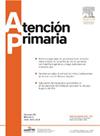沟通即权利:医疗保健中的强化沟通现状
IF 1.8
4区 医学
Q2 MEDICINE, GENERAL & INTERNAL
引用次数: 0
摘要
目的了解儿科医护人员对辅助和替代沟通(AAC)的了解和使用情况。设计横断面描述性观察性研究。在加泰罗尼亚设立初级保健中心、三级医院和区域医院。共有338名专业人员,包括儿科医生、儿科住院医师、护理人员和儿科住院护理人员。干预措施使用了一份专门为本研究设计的电子问卷。专家对其内容进行了审查,并对89名专业人员进行了试点测试,以评估项目的清晰度和相关性。主要结果:具有照顾有复杂沟通需要的患者的经验,AAC知识,AAC使用经验,以及该领域的先前培训。结果90%的受访者定期照顾有沟通障碍的儿童,其中94%的受访者治疗自闭症谱系障碍患者。然而,只有22%的人熟悉AAC的概念,不到10%的人知道ETRAN板。此外,89%的参与者没有接受过AAC培训,尽管99%的人认为这种培训是必要的。结论迫切需要将AAC知识整合到初始和后续的卫生保健培训中。AAC系统的实施不仅促进了沟通,而且为有复杂沟通需求的患者营造了一个更包容、更安全的环境。本文章由计算机程序翻译,如有差异,请以英文原文为准。
La comunicación como derecho: Estado actual de la comunicación aumentativa en la atención sanitaria
Objective
To assess the knowledge and use of Augmentative and Alternative Communication (AAC) among pediatric healthcare professionals.
Design
Cross-sectional descriptive observational study.
Setting
Primary care centers, tertiary hospitals, and regional hospitals in Catalonia.
Participants
A total of 338 professionals, including pediatricians, pediatric residents, nursing staff, and pediatric nursing residents.
Interventions
An electronic questionnaire specifically designed for this study was administered. Its content was reviewed by experts, and a pilot test was conducted with 89 professionals to assess the clarity and relevance of the items.
Main outcomes
Experience in caring for patients with complex communication needs, knowledge of AAC, experiences with AAC use, and prior training in this field.
Results
Ninety percent of respondents regularly cared for children with communication barriers, including 94% who treated patients with Autism Spectrum Disorder. However, only 22% were familiar with the concept of AAC, and less than 10% knew about ETRAN boards. Additionally, 89% of participants had not received training in AAC, although 99% considered such training necessary.
Conclusions
There is an urgent need to integrate AAC knowledge into both initial and ongoing healthcare training. The implementation of AAC systems not only facilitates communication but also fosters a more inclusive and safer environment for patients with complex communication needs.
求助全文
通过发布文献求助,成功后即可免费获取论文全文。
去求助
来源期刊

Atencion Primaria
医学-医学:内科
CiteScore
2.90
自引率
8.00%
发文量
156
审稿时长
33 days
期刊介绍:
Atención Primaria es una revista que publica trabajos de investigación relativos al ámbito de la atención primaria de salud. Desde el punto de vista conceptual, Atención Primaria asume el nuevo modelo de atención primaria de salud, orientado no sólo a la curación de la enfermedad, sino también a su prevención y a la promoción de la salud, tanto en el plano individual como en el de la familia y la comunidad. En estos nuevos aspectos que definen el modelo de atención primaria de salud es en los que se centran los trabajos de investigación que publica Atención Primaria, la primera revista de originales española creada para recoger y difundir la producción científica realizada desde los centros de atención primaria de salud sobre cuestiones como protocolización de la asistencia, programas de prevención, seguimiento y control de pacientes crónicos, organización y gestión de la asistencia primaria, entre otros.
 求助内容:
求助内容: 应助结果提醒方式:
应助结果提醒方式:


